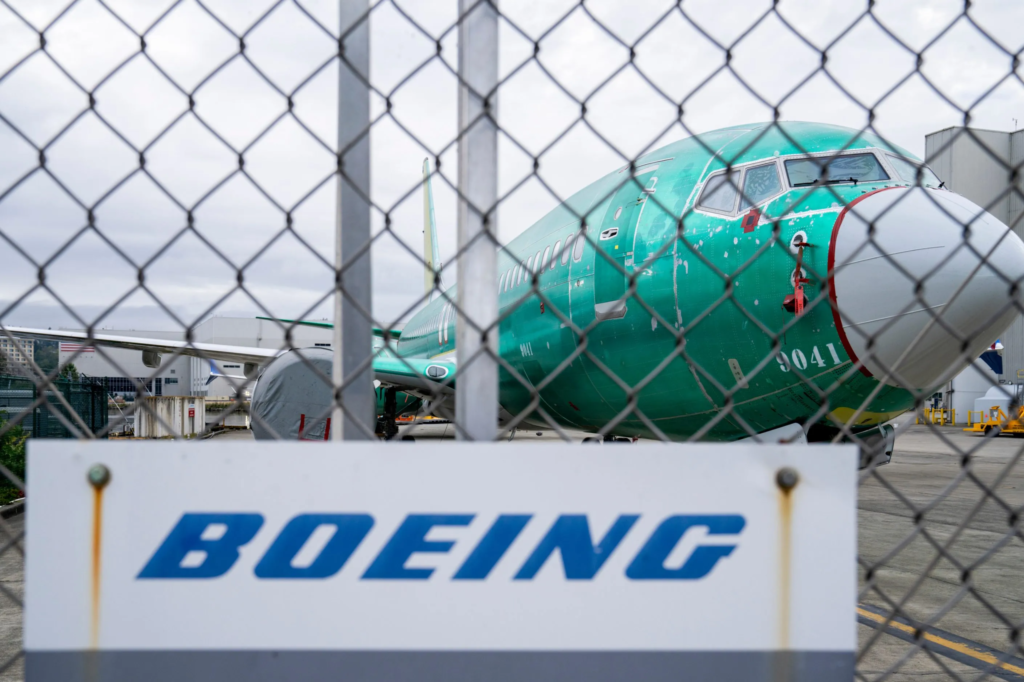Boeing, grappling with staggering financial losses from a crippling strike and years of operational and safety challenges, is now turning to major banks and Wall Street to raise tens of billions of dollars in much-needed cash. The aerospace giant has been struggling to stabilize amid mounting crises that have rocked its operations and reputation.
In a regulatory filing released early Tuesday, Boeing announced plans to borrow $10 billion from a consortium of banks. Simultaneously, it revealed plans to raise an additional $25 billion through a combination of stock and debt sales. The $10 billion loan would be included in the $25 billion overall capital-raising effort.
The company’s debt has surged dramatically in recent years, as it posted core operating losses exceeding $33 billion. The situation has been worsened by a month-long strike involving 33,000 members of the International Association of Machinists (IAM), which has brought Boeing’s commercial airplane production to a near halt.
Labor talks between Boeing and IAM fell apart last week, with no new negotiations scheduled. On Friday, Boeing’s new CEO Kelly Ortberg announced plans to reduce its global workforce by 10%, cutting approximately 17,000 employees from its total headcount of 171,000.
Boeing’s credit rating has plummeted to its lowest investment-grade level, teetering on the edge of “junk bond” status. Major credit rating agencies have warned that a downgrade to junk status is imminent, which would increase the cost of borrowing for the embattled company. Boeing’s long-term debt has soared to $53 billion as of June 2024, a sharp rise from $10.7 billion in March 2019, when the second fatal crash of its 737 Max led to the 20-month grounding of its flagship aircraft.
Escalating Crises and Ongoing Challenges
Over the past six years, Boeing has faced a series of crises that range from damaging to tragic. The two deadly 737 Max crashes, which claimed 346 lives, sparked global outrage and led to Boeing pleading guilty to deceiving the Federal Aviation Administration (FAA) during the aircraft’s certification process. The company agreed to pay up to $487 million in fines as part of a plea deal, but the settlement is still awaiting approval by a federal judge. Families of the crash victims argue that the penalty is insufficient, calling for harsher consequences.
Whistleblowers have also testified before Congress, accusing Boeing of prioritizing profits over safety and quality, breaching its own internal guidelines. This was further underscored by an alarming incident in January 2024, when a door plug blew off a 737 Max operated by Alaska Airlines, leaving a gaping hole in the plane shortly after takeoff. Fortunately, no one was seriously injured, but the event triggered numerous federal investigations, including one that revealed the aircraft left the Boeing factory without the proper bolts to secure the door plug.
The IAM strike has only compounded Boeing’s troubles. Last month, the company and union leadership reached a tentative agreement that would have given union members a 25% wage increase over four years, but the membership overwhelmingly voted to reject the deal and went on strike. A revised offer with a 30% wage hike was also turned down by union negotiators.
Boeing’s Duopoly Status Provides a Lifeline
Despite its mounting challenges, Boeing remains able to tap into financing from banks and raise capital on Wall Street, largely because of its unique position in the market. Boeing and its European rival Airbus dominate the global full-size jet market, with no other competitors capable of meeting demand from the airline industry. This duopoly ensures that, despite its difficulties, Boeing will survive.
Both companies have backlogs of orders that stretch years into the future, and Airbus lacks the capacity to absorb Boeing’s canceled orders. Airlines that switch to Airbus jets could face delivery delays of up to five years. Meanwhile, it would take years for a new competitor to obtain approval to manufacture commercial aircraft.
Although Boeing has lost market share to Airbus in recent years, the company’s place in the industry remains secure. However, the production halt of its 737 Max, as well as its 767 and 777 freighters, due to the strike, poses significant short-term cash flow challenges. Boeing receives the bulk of its revenue from aircraft deliveries, so delays further squeeze the company’s finances.
In addition, Boeing’s much-anticipated 777X, the next generation of its widebody passenger jet, has been further delayed following new problems discovered during test flights. Originally set for delivery in 2020, it is now scheduled to enter service in 2026, exacerbating the company’s woes.
This evolving situation highlights Boeing’s precarious position as it battles through labor disputes, production halts, and its ballooning debt burden. Despite its market dominance, the road to recovery remains long and fraught with obstacles for the aviation giant.
